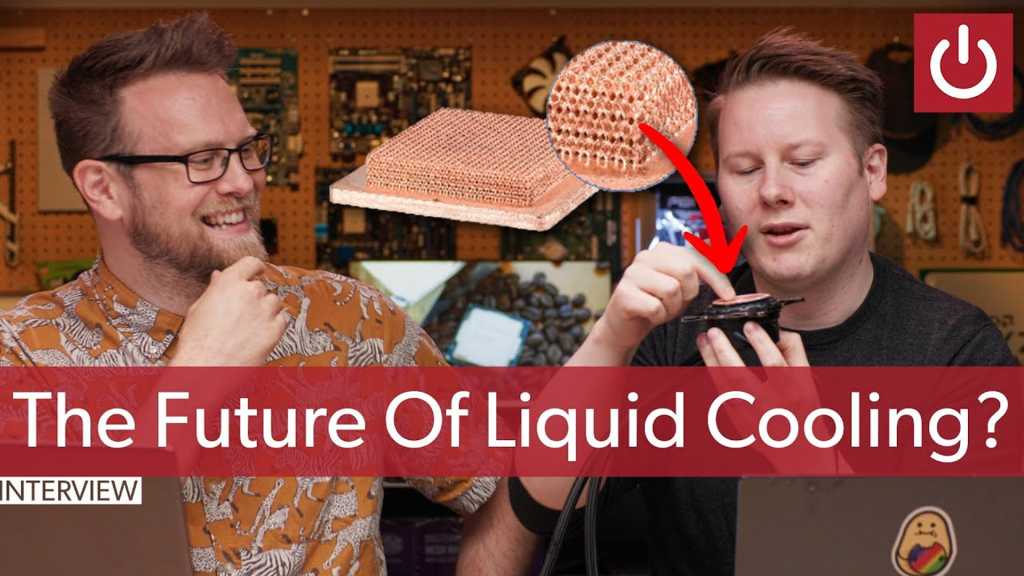The principle behind liquid cooling your PC parts is pretty simple: cool liquid comes in, pulls heat from the component, warm liquid moves out, fans cool it down and expel hot air outside the PC case. One of the essential components is the heat plate that spreads across the CPU or GPU, effectively transferring heat to the liquid. Now there’s a new innovation in plate design that might just be the future. Dr. Ian Cutress (@TechTechPotato) once again joins us on PCWorld’s YouTube channel to break it down.
It’s called “Electrochemical Additive Manufacturing,” or ECAM for short. Company Fabric8 Labs is using this process to expand on the design of conventional copper plate. Current designs use a series of straight or slightly curved copper “fins” in direct contact with the transfer liquid, balancing the surface area of a heat spreader with the liquid flow.
This new ECAM process uses advanced mathematical models to find the ideal shape and placement of those copper fins, making both the heat transfer and liquid flow much more efficient. 3D metal printing is used to fabricate this ideal shape with much more precision than is possible or economical with conventional tools. The curvy, holed surface (Dr. Cutress describes it as “twisted Swiss cheese”) with walls just a few micrometers thick allows a perfect balance between surface area and liquid flow to massively increase cooling power.
In addition to superior cooling power, this advanced design allows for reduced pressure from the liquid pump to achieve the same level of cooling, effectively reducing power draw. That’s a plus for standard PCs, but it’s a huge plus for data centers, which expend a ton of power cooling their hardware. What’s even more impressive is that despite being a far more complex shape, these copper spreaders are actually cheaper to manufacture with 3D printing than conventional straight fins with metal molds.
ECAM is a fascinating technology that could bring some huge gains to cooling power and efficiency. For more looks at the most exciting upcoming tech, be sure to subscribe to PCWorld on YouTube.

